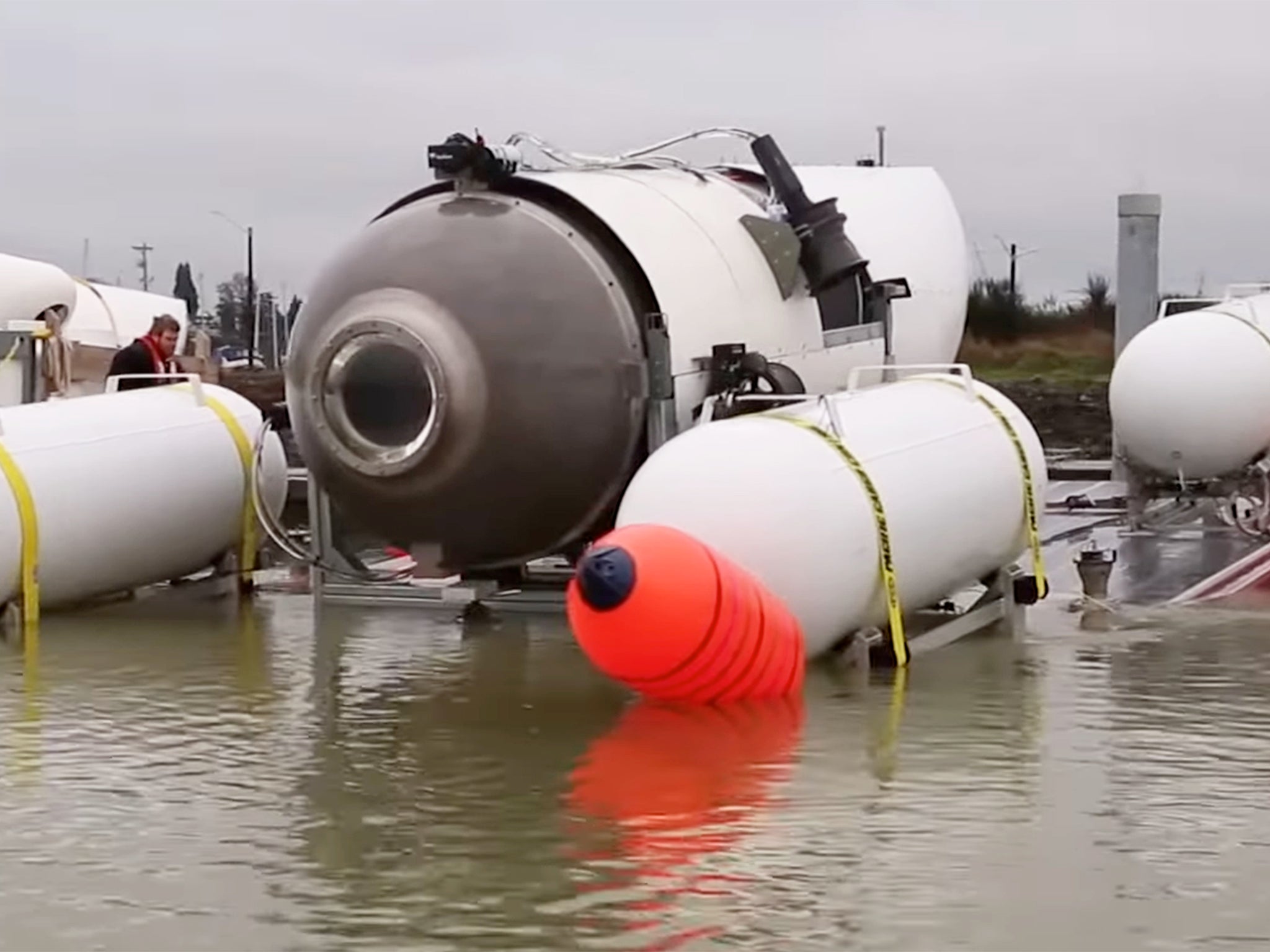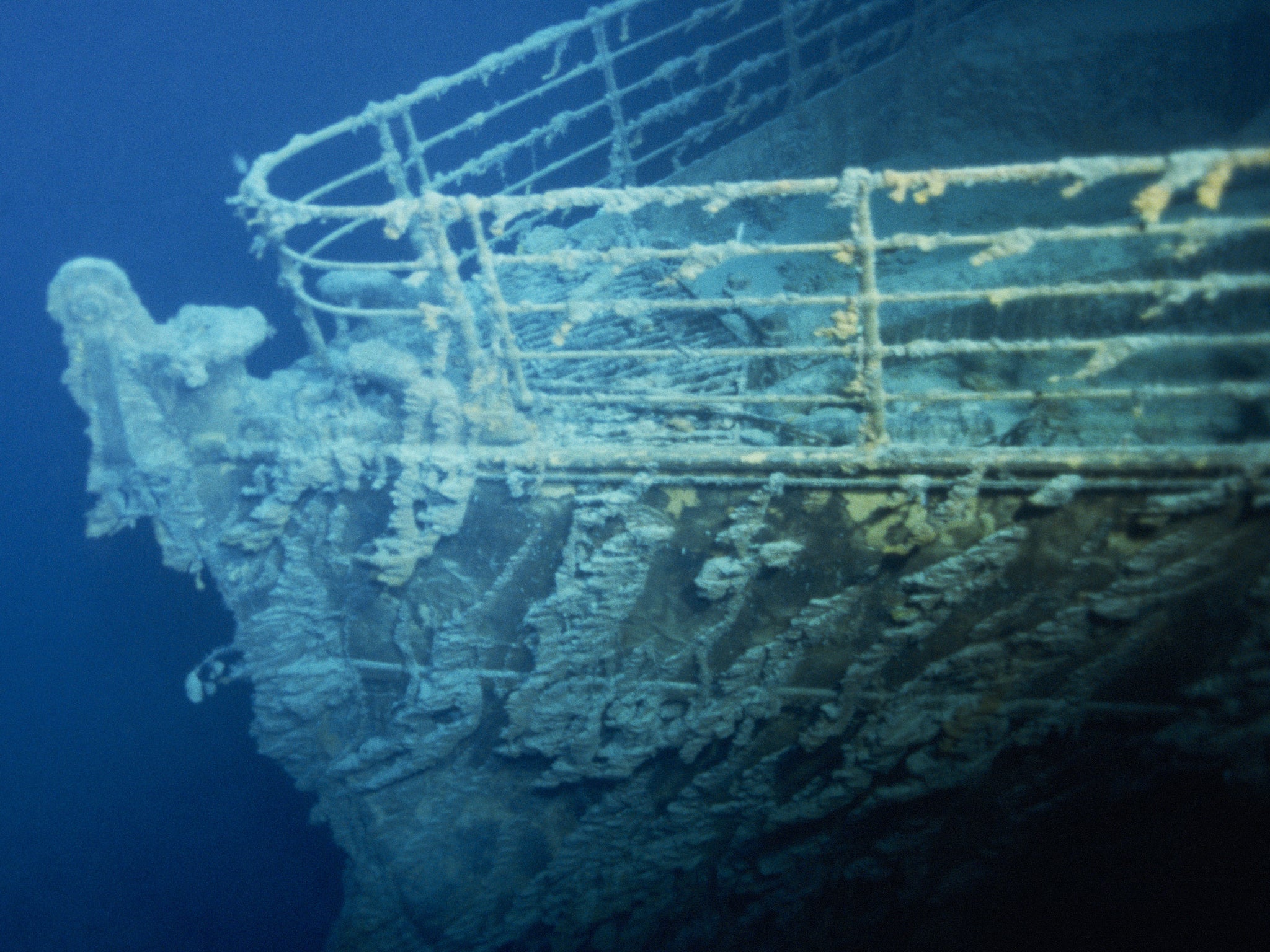British Navy expert warns ‘timescale’ of missing Titanic sub is ‘very concerning’
Former Rear Admiral Chris Parry told Sky News that the OceanGate Expeditions vessel could have fallen foul of a ‘catastrophic failure’ or even have become tangled up in the debris of the famed shipwreck
Your support helps us to tell the story
From reproductive rights to climate change to Big Tech, The Independent is on the ground when the story is developing. Whether it's investigating the financials of Elon Musk's pro-Trump PAC or producing our latest documentary, 'The A Word', which shines a light on the American women fighting for reproductive rights, we know how important it is to parse out the facts from the messaging.
At such a critical moment in US history, we need reporters on the ground. Your donation allows us to keep sending journalists to speak to both sides of the story.
The Independent is trusted by Americans across the entire political spectrum. And unlike many other quality news outlets, we choose not to lock Americans out of our reporting and analysis with paywalls. We believe quality journalism should be available to everyone, paid for by those who can afford it.
Your support makes all the difference.A former British Navy officer has warned that the “timescale” of the missing Titanic submersible is “very concerning” – as it emerged that there has been no sign of life from the vessel for the past seven hours.
Former Rear Admiral Chris Parry told Sky News that the OceanGate Expeditions vessel could have fallen foul of a “catastrophic failure” or even have become tangled up in the debris of the famed shipwreck.
"It’s very concerning indeed,” he said.
“Having listened to the timescale it’s very worrying.”
He went on to describe the possible “optimistic” and “catastrophic” circumstances that could have taken place hundreds or even thousands of feet below the surface of the water.
“There’s an optimistic option and that’s that it’s either lost an umbilical communication with the surface or indeed there’s been a malfunction and the submarine continues to operate but obviously out of contact with its mother ship,” he said.
“Obviously on the other end of the scale there could have been an accident. It could have become entangled in the wreckage of the Titanic. It could indeed have had a catastrophic failure.
“The answer is we don’t know just yet. What we do know of course is the wreck site is off the grand banks, it’s a long way from anywhere and the nearest rescue facility will be on the East Coast of the United States.”
OceanGate Expeditions, a company offering eight-day tourist missions to see the Titanic wreckage at a cost of $250,000 per person, confirmed on Monday that its submarine was lost at sea with crew members on board.
The company said in a statement to CBS News that it is “exploring and mobilizing all options to bring the crew back safely.”
“Our entire focus is on the crewmembers in the submersible and their families,” it said, adding that it is “deeply thankful for the extensive assistance we have received from several government agencies and deep sea companies in our efforts to reestablish contact with the submersible”.
The exact number of people missing remains unclear but the company’s submersibles can carry up to five people at a time.

It is also unclear if they are all crew members or if some are paying tourists.
There has been no communication from the sub for more than seven hours, according to Sky News. It usually sends signals to its mother ship every 15 minutes.
The submersible operates by being launched from a mother ship which then later recovers it at the end of its mission.
A search and rescue operation led by the Boston Coast Guard is currently under way in the Atlantic Ocean.

The rescue mission will be “very difficult”, said Mr Parry – pointing to the “undulating” sea bed, the fact the Titanic lies in a trench on the sea floor and that the debris of the shipwreck will make it challenging to locate the sub using sonar.
“The only hope I think one has is that the mother ship will have a standby craft that will be able to go down and investigate immediately what is going on,” he said.
When asked how quickly this could happen, he said that “any responsible organisation would have another submersible ready to go down at an hour’s notice”. If the company doesn’t, he said it could take up to a couple of days for search teams to send such a craft from the east coast.
The Independent’s attempts to contact OceanGate were unsuccessful at the time of publishing.
The company last posted on Twitter on 15 June, detailing its latest Titanic expeditions.
“It’s been an incredibly busy two weeks! Thank you to all of our dive teams who’ve joined us - here’s a look at our Mission 3 and Mission 4 crew,” the company said.
The Titanic, operated by the White Star Line, sank on its maiden voyage across the Atlantic Ocean in 1912.
The ship – the largest vessel at the time – set sail from Southampton, UK, on 10 April 1912, with more than 2,200 passengers and crew on board headed for New York City.
Five days into its voyage, the Titanic struck an iceberg and sank to the bottom of the ocean. More than 1,500 people died.
In recent years, people have taken trips to visit the wreckage which now lies around 12,500 feet at the bottom of the Atlantic Ocean, approximately 370 miles off the coast of Newfoundland, Canada.




Join our commenting forum
Join thought-provoking conversations, follow other Independent readers and see their replies
Comments